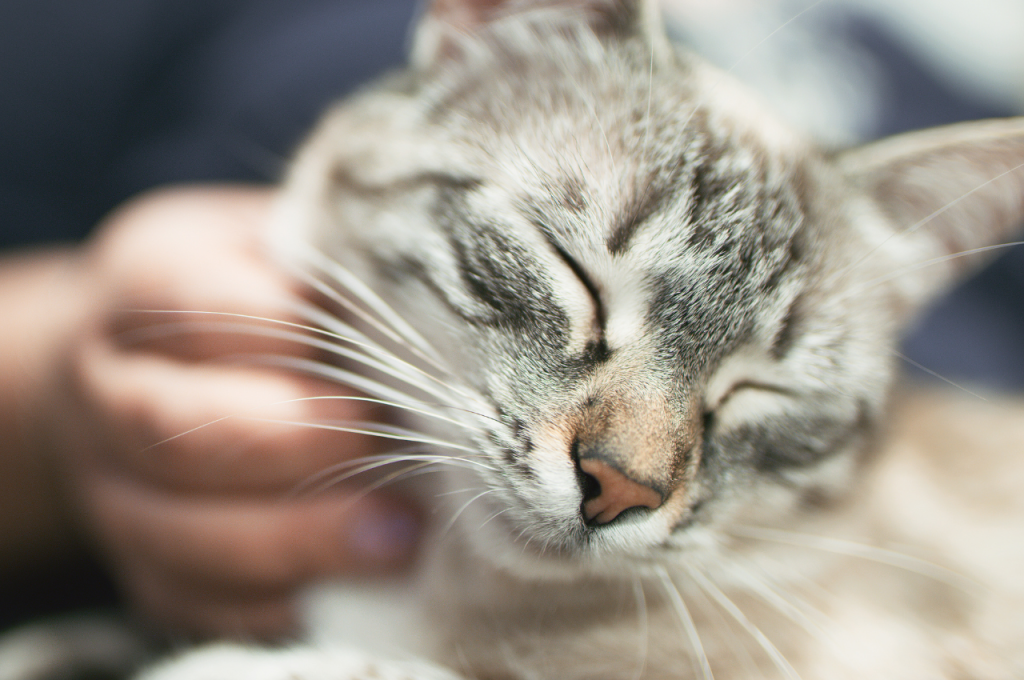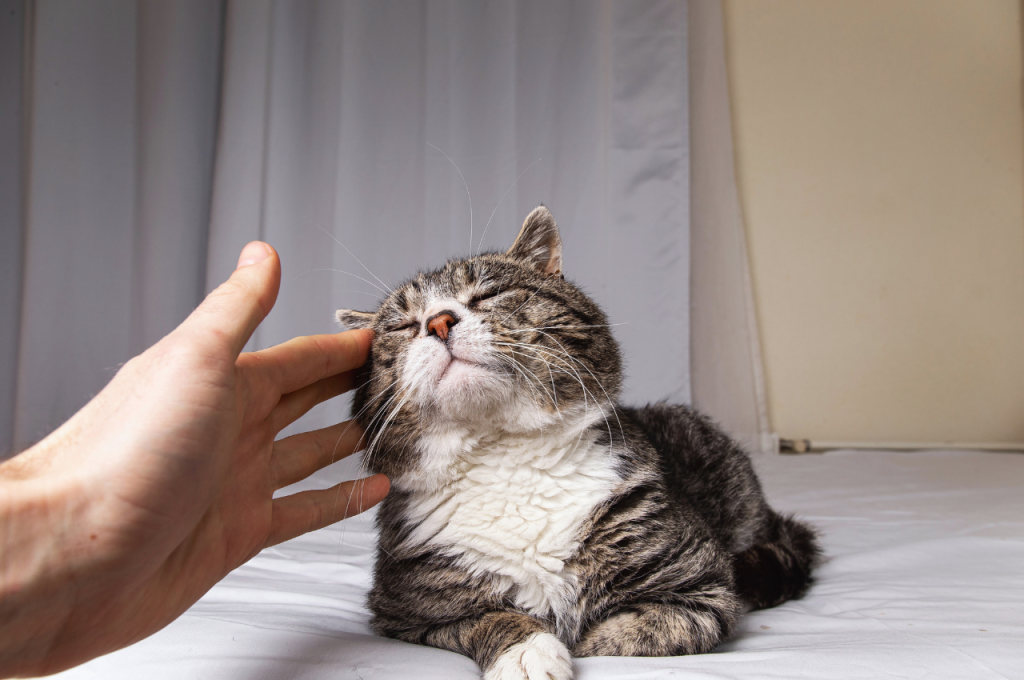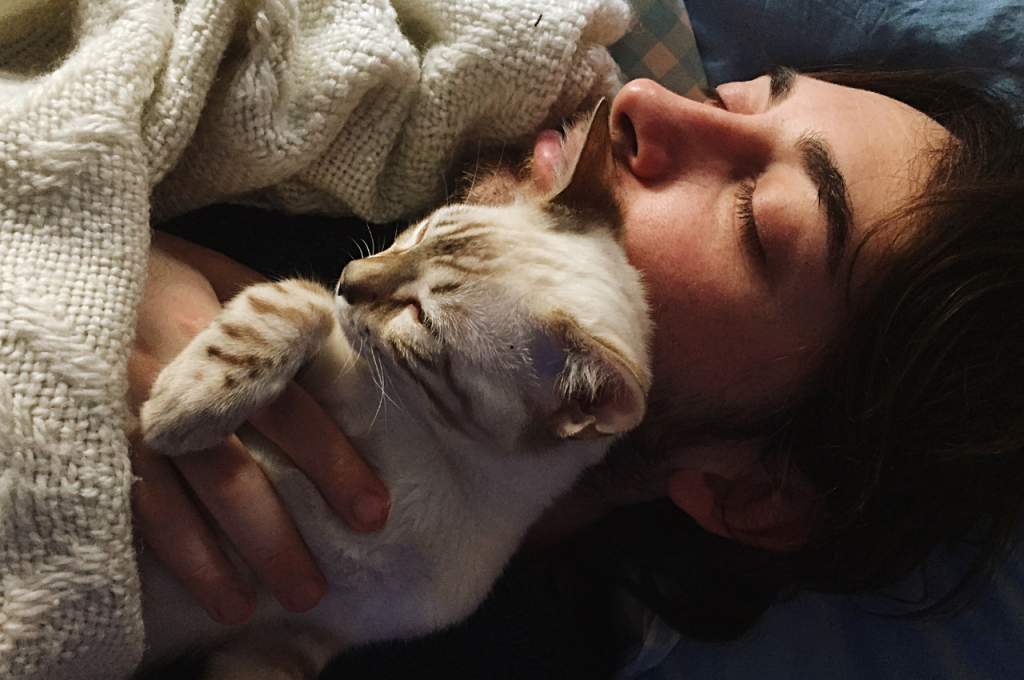Your cat loves you if it blinks slowly at you and brings you “gifts” like toys or dead animals. Cats also show affection through head-butting, purring, and rubbing against you.
Now that you know how to recognize your cat’s love, let’s explore the different ways cats show affection towards their owners. Cats have a reputation for being aloof and independent creatures, but they are capable of forming deep bonds with their owners.In fact, many cat owners report feeling a strong connection with their feline companions. While cats may not express their love in the same way as dogs or other pets, they have their own unique ways of showing affection.
Understanding these behaviors can help you strengthen your bond with your cat and deepen your relationship. We will explore the different ways cats show their love and how you can reciprocate that love.
The Mystery of Feline Affection
Have you ever wondered if your cat truly loves you? Understanding a cat’s affection can be a puzzling journey, as felines have their unique ways of showing love.

Independent or Just Misunderstood
Cats often get a bad rap for being aloof or distant, but they are not always as independent as they seem. They have a strong bond with their humans, just expressed differently.
The Unique Ways Cats Show Love
- Purring: A cat’s purr is a sign of contentment and can also be a way of seeking comfort from their favorite humans.
- Head-Butting: Known as “head bunting,” when a cat rubs its head against you, it’s a display of trust and affection.
- Gift-Giving: Cats may bring you “presents” like toys or even prey as a way to show their love and provide for you.
Physical Signs of Cat Love
Physical signs of cat love are often subtle but unmistakable. Understanding these cues can help you strengthen the bond with your feline friend. By recognizing these signs, you can develop a deeper understanding of your cat’s emotions and strengthen your relationship.
The Tail Tells
A cat’s tail is a powerful indicator of its feelings. When your cat approaches you with its tail held upright and with a slight curve at the top, it’s expressing affection and greeting you warmly. On the other hand, a thrashing tail might indicate agitation or overstimulation.
Purring: a Sign of Contentment
Purring is one of the most well-known signs of feline contentment. When your cat purrs while being petted or cuddled, it’s a sure sign of happiness and affection. This soothing sound signifies that your cat feels safe and loved in your presence.
Kneading: More Than Just Comfort
If your cat kneads you with its paws, it’s a sign of deep affection. This behavior, often accompanied by purring, harks back to kittenhood when they kneaded their mother’s belly to stimulate milk flow. When your cat kneads you, it’s a sign of comfort, trust, and love.
Behavioral Indicators of Affection
Wondering if your cat loves you? Look out for behavioral indicators of affection. Signs such as purring, kneading, headbutting, and slow blinking can indicate your cat’s love and affection towards you. Keep an eye out for these gestures to know that your feline friend truly cares.
Following You Around
Cats that follow you around are showing affection. They enjoy your company and want to be near you.
Bringing Gifts: The Hunter’s Love
Cats show love by bringing gifts like toys or prey. It’s a sign of affection.
Slow Blinking: The Cat’s Kiss
Slow blinking from a cat is like a kiss. It shows trust and contentment.
Vocalizations and What They Mean
Communication is essential in any relationship, and cats have their unique way of expressing their feelings through vocalizations. Understanding what these sounds mean can give you valuable insights into how your cat feels about you. Here are some common vocalizations and their meanings:

Meowing: Seeking Attention
Meowing is perhaps the most recognizable sound a cat makes. While it’s true that cats meow to communicate with humans, it’s important to note that they primarily use this vocalization to get our attention. Whether it’s a soft meow or a loud, persistent one, your cat is trying to communicate something to you. It could be a request for food, playtime, or simply a desire for companionship. Pay attention to the context and body language accompanying the meow to better understand your cat’s needs.
Chirping and Trilling: Expressing Happiness
Cats often make chirping or trilling sounds, which can be quite adorable. These vocalizations are usually a sign of contentment and happiness. When your cat chirps or trills, it’s their way of expressing joy and excitement. You might hear these sounds when they spot a bird through the window or when they’re anticipating playtime with you. It’s a positive indication that your cat is enjoying their time with you and feels comfortable in your presence.
In addition to meowing, chirping, and trilling, cats may also make other sounds like purring, hissing, growling, or yowling, each carrying its own meaning. Paying attention to your cat’s vocalizations and observing their body language can help you decode their messages and deepen your bond with them.
The Significance of Sharing Space
As a cat owner, you may have wondered if your feline friend truly loves you. While cats may not show affection in the same way as dogs or humans, they do have their own unique ways of expressing love and bonding with their owners. One of the most significant signs that your cat loves you is their willingness to share space with you. In this post, we’ll explore two examples of this behavior: sleeping next to you and choosing your lap as a throne.
Sleeping Next to You
If your cat sleeps next to you, it’s a clear indication that they feel comfortable and safe in your presence. Cats are instinctually wary of predators, so if they’re willing to let their guard down around you, it’s a sign that they trust you. Additionally, cats are creatures of habit, and they’re most vulnerable when they’re asleep. By choosing to sleep next to you, your cat is showing that they feel secure and protected in your presence.
Choosing Your Lap As a Throne
Another way that cats show affection through shared space is by choosing your lap as a place to rest. When a cat sits on your lap, they’re not only seeking warmth and comfort, but they’re also claiming you as their own. In the wild, cats establish territories and mark them with their scent. By sitting on your lap, your cat is essentially marking you as their territory, which is a clear sign of love and affection.
In conclusion, sharing space is a significant way that cats show love and affection towards their owners. Whether it’s sleeping next to you or choosing your lap as a throne, these behaviors demonstrate that your cat feels safe, comfortable, and secure in your presence. So the next time your feline friend snuggles up to you, remember that it’s a clear sign of their love and trust.
Playtime: a Bonding Activity
Playtime is not just a fun way to keep your cat entertained, it is also a crucial bonding activity that can help you gauge if your cat truly loves you. Cats are intelligent and independent creatures, so the way they interact with you during playtime can reveal a lot about their affection towards you.
Interactive Toys: Building Trust
Using interactive toys during playtime is a fantastic way to build trust and strengthen the bond between you and your cat. These toys engage your cat’s natural hunting instincts and provide an opportunity for you to actively participate in their play sessions.
By playing with interactive toys, you are not only stimulating your cat’s mind and body but also creating a positive association with you. This shared experience can foster a sense of trust and affection, as your cat sees you as a source of fun and enjoyment.
Some popular interactive toys for cats include:
- Feather wands: Mimicking the movements of birds, these toys are perfect for engaging your cat’s hunting instincts.
- Puzzle feeders: Combining playtime with mealtime, these toys provide mental stimulation as your cat figures out how to access their food.
- Treat-dispensing toys: These toys reward your cat’s efforts with a tasty treat, making playtime even more rewarding.
The Joy of Hunting Together
Another way to gauge your cat’s affection is through interactive play sessions that simulate hunting together. Cats are natural hunters, and engaging in play that mimics hunting can create a strong bond between you and your feline friend.
During these play sessions, you can use toys that resemble prey, such as small mice or balls, and initiate a chase. By allowing your cat to “catch” the toy, you are fulfilling their instinctual desire to hunt and providing them with a sense of accomplishment. As you bond over the joy of hunting together, you may notice your cat exhibiting signs of trust and affection. They may purr, rub against you, or even bring you their “catch” as a token of their love.
Remember, every cat is unique, and the way they express their love may vary. Pay attention to your cat’s body language, vocalizations, and overall behavior during playtime, as these can provide valuable insights into their feelings toward you.
Understanding Negative Behaviors
Cats have unique ways of expressing their love, but sometimes these behaviors can be misinterpreted as negative. Understanding these signs is crucial in strengthening the bond with your feline friend.
Biting and Scratching: Play or Affection?
Cats may bite or scratch during play, but it’s essential to differentiate between playful behavior and aggression. Playful biting and scratching are often gentle and accompanied by purring, while aggressive actions are usually accompanied by hissing or growling.
Marking Territory: a Sign of Trust
Cats mark their territory by rubbing their scent glands on objects. This is a positive sign of trust and affection, as it means the cat is claiming you as part of their territory. However, if the marking becomes excessive, it may indicate stress or anxiety.
Strengthening Your Bond With Your Cat
Building a strong bond with your feline friend is key to a happy and fulfilling relationship. Understanding your cat’s behavior and knowing how to strengthen your bond with them is essential for a harmonious coexistence.

Respecting Boundaries
Cats are independent creatures and, as such, they value their personal space. It’s crucial to respect your cat’s boundaries and allow them the freedom to come to you on their terms. Creating a safe and comfortable environment for your cat where they can retreat when needed is essential in fostering trust and strengthening your bond.
Consistent Interaction: The Key to a Happy Cat
Consistent interaction is vital in building and maintaining a strong bond with your cat. Regular playtime and grooming sessions not only provide physical and mental stimulation but also create opportunities for bonding. Engaging in interactive play and maintaining a predictable routine can help your cat feel secure and loved.
Conclusion
Understanding your cat’s behavior cues can reveal their affection. From purring to head-butting, cats show love in various ways. By observing their actions and building a strong bond, you can truly know if your cat loves you. Remember, patience and care go a long way in feline relationships.
